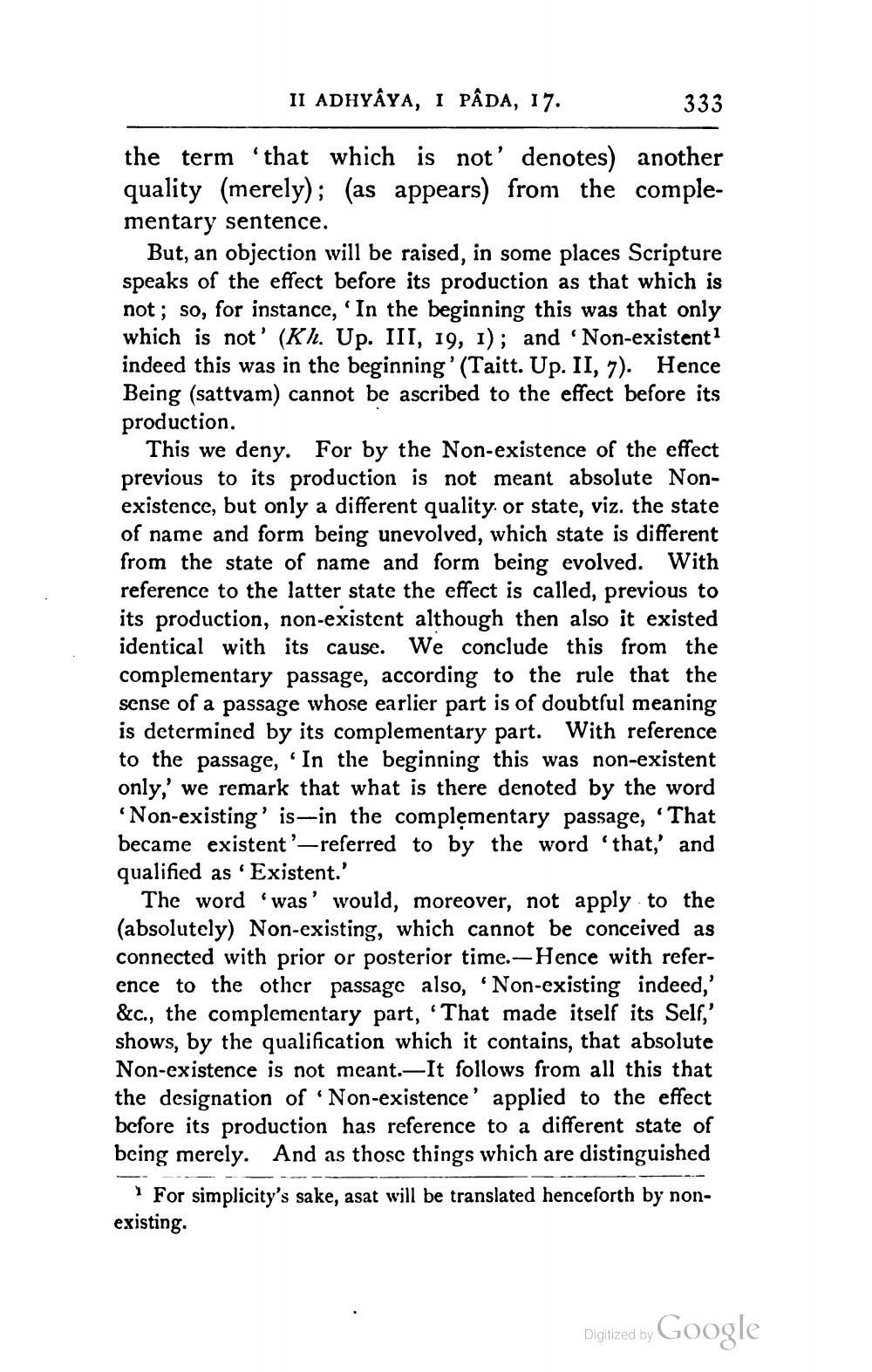________________
II ADHYÂYA, I PÂDA, 17.
333
the term 'that which is not' denotes) another quality (merely); (as appears) from the complementary sentence.
But, an objection will be raised, in some places Scripture speaks of the effect before its production as that which is not; so, for instance, 'In the beginning this was that only which is not' (Kh. Up. III, 19, I); and 'Non-existent? indeed this was in the beginning' (Taitt. Up. II, 7). Hence Being (sattvam) cannot be ascribed to the effect before its production.
This we deny. For by the Non-existence of the effect previous to its production is not meant absolute Nonexistence, but only a different quality. or state, viz. the state of name and form being unevolved, which state is different from the state of name and form being evolved. With reference to the latter state the effect is called, previous to its production, non-existent although then also it existed identical with its cause. We conclude this from the complementary passage, according to the rule that the sense of a passage whose earlier part is of doubtful meaning is determined by its complementary part. With reference to the passage, In the beginning this was non-existent only,' we remark that what is there denoted by the word 'Non-existing' is in the complementary passage, 'That became existent'-referred to by the word 'that,' and qualified as Existent.'
The word 'was' would, moreover, not apply to the (absolutely) Non-existing, which cannot be conceived as connected with prior or posterior time.-Hence with reference to the other passage also, 'Non-existing indeed,' &c., the complementary part, “That made itself its Self,' shows, by the qualification which it contains, that absolute Non-existence is not meant.-It follows from all this that the designation of Non-existence' applied to the effect before its production has reference to a different state of being merely. And as those things which are distinguished
For simplicity's sake, asat will be translated henceforth by nonexisting.
Digized by Google




